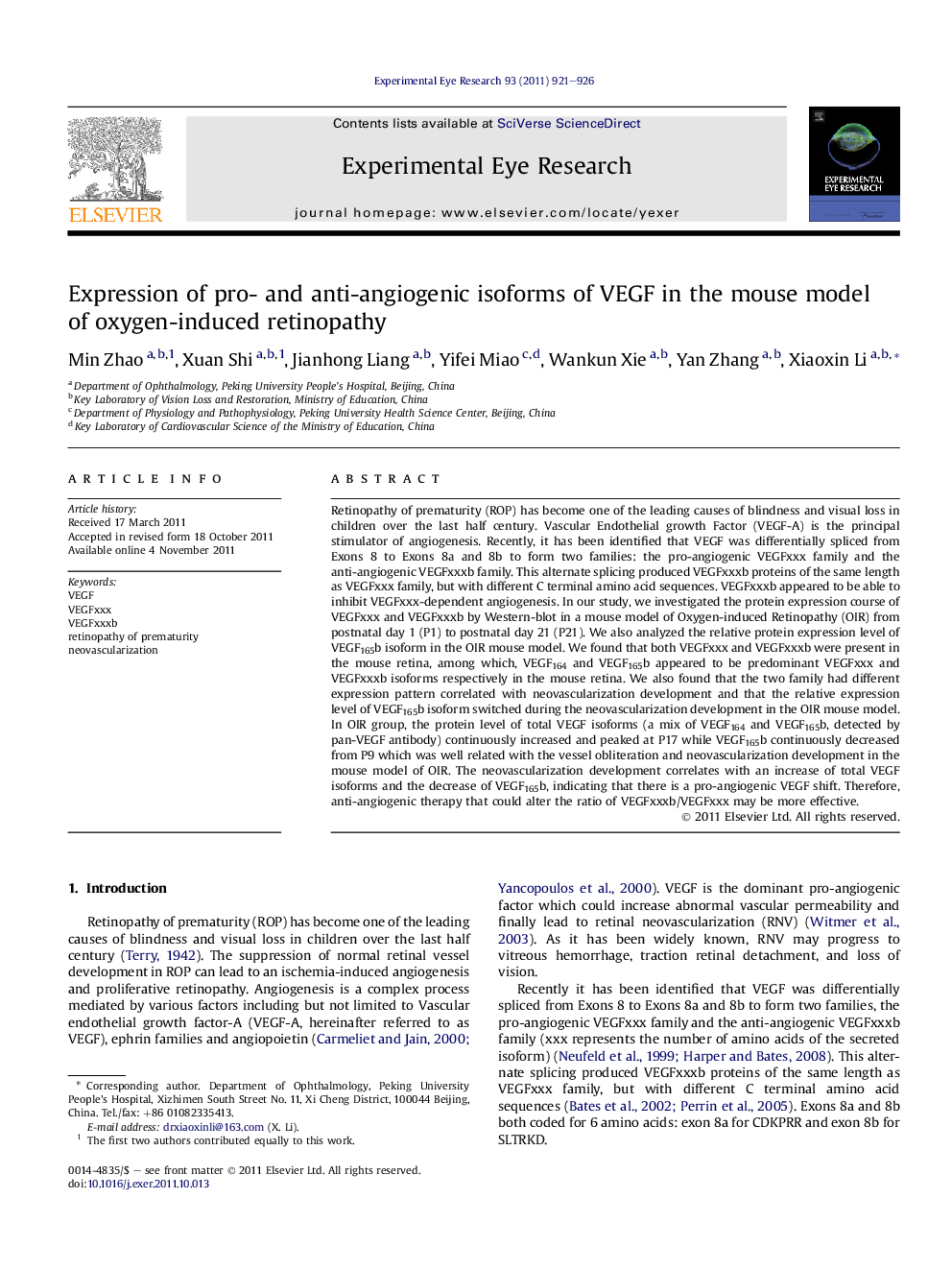| کد مقاله | کد نشریه | سال انتشار | مقاله انگلیسی | نسخه تمام متن |
|---|---|---|---|---|
| 6197420 | 1261146 | 2011 | 6 صفحه PDF | دانلود رایگان |

Retinopathy of prematurity (ROP) has become one of the leading causes of blindness and visual loss in children over the last half century. Vascular Endothelial growth Factor (VEGF-A) is the principal stimulator of angiogenesis. Recently, it has been identified that VEGF was differentially spliced from Exons 8 to Exons 8a and 8b to form two families: the pro-angiogenic VEGFxxx family and the anti-angiogenic VEGFxxxb family. This alternate splicing produced VEGFxxxb proteins of the same length as VEGFxxx family, but with different C terminal amino acid sequences. VEGFxxxb appeared to be able to inhibit VEGFxxx-dependent angiogenesis. In our study, we investigated the protein expression course of VEGFxxx and VEGFxxxb by Western-blot in a mouse model of Oxygen-induced Retinopathy (OIR) from postnatal day 1 (P1) to postnatal day 21 (P21). We also analyzed the relative protein expression level of VEGF165b isoform in the OIR mouse model. We found that both VEGFxxx and VEGFxxxb were present in the mouse retina, among which, VEGF164 and VEGF165b appeared to be predominant VEGFxxx and VEGFxxxb isoforms respectively in the mouse retina. We also found that the two family had different expression pattern correlated with neovascularization development and that the relative expression level of VEGF165b isoform switched during the neovascularization development in the OIR mouse model. In OIR group, the protein level of total VEGF isoforms (a mix of VEGF164 and VEGF165b, detected by pan-VEGF antibody) continuously increased and peaked at P17 while VEGF165b continuously decreased from P9 which was well related with the vessel obliteration and neovascularization development in the mouse model of OIR. The neovascularization development correlates with an increase of total VEGF isoforms and the decrease of VEGF165b, indicating that there is a pro-angiogenic VEGF shift. Therefore, anti-angiogenic therapy that could alter the ratio of VEGFxxxb/VEGFxxx may be more effective.
⺠VEGF164 and VEGF165b were predominant VEGFxxx and VEGFxxxb isoforms in mouse retina. ⺠VEGFxxx and VEGFxxxb expression well related with neovascularization development. ⺠Relative VEGF165b expression switched during the neovascularization development. ⺠Therapeutic strategy: alter the ratio of VEGFxxxb/VEGFxxx isoforms.
Journal: Experimental Eye Research - Volume 93, Issue 6, December 2011, Pages 921-926